Creative Ceramics Projects for Kids
Welcome to the wonderful world of ceramics, where creativity knows no bounds! When it comes to engaging kids in art, ceramics is a fantastic medium that not only allows them to express their artistic flair but also helps develop their fine motor skills. Imagine your child molding a lump of clay into a beautiful masterpiece, their eyes lighting up with every pinch and twist. Isn’t that a sight to behold? This article explores various fun and engaging ceramics projects that children can undertake, fostering creativity and providing a hands-on learning experience in the world of pottery.
Ceramics is more than just a craft; it's a journey into the realm of imagination. With just a few basic materials and tools, kids can start their artistic adventure. The beauty of ceramics lies in its accessibility. All you need is some clay, tools for shaping, and a touch of inspiration! From air-dry clay to traditional pottery clay, the options are endless. And don’t worry if you’re not a pottery expert—this is all about having fun and exploring creativity! So, gather your supplies, roll up those sleeves, and let’s dive into the basics of ceramics for kids.
Hand-building is an exciting way for kids to create unique pottery pieces without the need for a pottery wheel. This method encourages imagination and experimentation, allowing children to express their creativity freely. They can shape their clay into various forms and sizes, making each piece truly one-of-a-kind. Whether it's a simple pinch pot or an elaborate coil pot, hand-building techniques are perfect for young artists. Let’s explore some essential hand-building techniques that will spark your child’s creativity!
Pinch pots are a beginner-friendly project that allows kids to mold clay using just their fingers. It’s as simple as pinching the clay to form a bowl-like shape. This technique not only helps children develop their dexterity but also encourages them to think creatively about the shapes they can create. Here’s how to make a pinch pot:
1. Start with a small ball of clay. 2. Use your thumb to press into the center of the ball. 3. Pinch the sides gently to create a bowl shape. 4. Continue pinching and shaping until you reach the desired thickness. 5. Smooth out any rough edges with your fingers.
Once the pinch pots are formed, the real fun begins! Kids can personalize their pots with vibrant paints, glazes, and embellishments. The possibilities for decoration are endless, whether it’s painting flowers, adding glitter, or even sticking on small beads. Each pot can tell a unique story, reflecting the personality of its creator.
After crafting their pinch pots, kids can unleash their inner artists by decorating them. Here are some tips to make each pot truly unique:
- Paints and Glazes: Use bright colors or metallics to make the pots stand out.
- Textures: Incorporate different textures by pressing leaves or fabric into the clay before it dries.
- Personal Touch: Add initials or symbols that represent the child’s personality.
Exploring various clay types can enhance the pinch pot experience. Kids can experiment with:
- Air-Dry Clay: Perfect for beginners, it doesn’t require a kiln and dries naturally.
- Polymer Clay: A versatile option that can be baked in a home oven to harden.
- Traditional Clay: Ideal for those who want to dive deeper into pottery and use a kiln.
Each type of clay offers a unique texture and finish, allowing kids to choose what best fits their project.
Coil pots are another exciting hand-building project that teaches kids about structure and design. By rolling out long coils of clay and stacking them, children can create pots that vary in height and shape. This method not only enhances their understanding of pottery but also encourages them to think about how to balance and support their creations. The process of creating coil pots can be a delightful journey of exploration, where kids can experiment with different designs and sizes.
Once the pottery pieces are shaped, glazing adds a splash of color and texture, transforming simple clay into stunning works of art. Glazing techniques can range from dipping and brushing to sponge application, each offering a unique finish to the pottery. Kids can let their imaginations run wild as they discover how different glazing methods can change the look of their creations.
Understanding the difference between under glazing and over glazing is crucial for achieving the desired effects. Under glazing involves applying color to the clay before it is fired, while over glazing is done after the initial firing. Each method has its unique benefits, allowing kids to experiment with layering colors and textures to create stunning pottery pieces.
For a creative twist, kids can experiment with natural materials to create unique glazes. By using items like fruits, vegetables, and spices, they can develop interesting colors and textures in their ceramics. Imagine using beet juice for a beautiful red hue or turmeric for a sunny yellow! This not only adds an eco-friendly element to their projects but also teaches them about the natural world around them.
Themed ceramics projects can spark children's imagination and creativity. Whether it’s creating animal figurines, holiday decorations, or functional pottery, themed projects inspire kids to think outside the box. Themed projects often lead to collaborative efforts, where friends or family can join in on the fun, making it a wonderful bonding experience.
Creating seasonal ceramics can be a delightful way to celebrate holidays. Kids can make decorations that reflect the time of year, such as pumpkins for fall or snowmen for winter. These projects not only enhance their artistic skills but also allow them to connect with the changing seasons, making art a part of their everyday life.
Functional pottery projects allow kids to create items they can use, blending creativity with practicality. From making bowls and mugs to crafting planters, these projects provide a sense of accomplishment as children see their creations being used in everyday life. Plus, there’s nothing quite like sipping juice from a mug that they made themselves!
Q: What age is appropriate for kids to start ceramics?
A: Kids as young as 4 can start with simple projects like pinch pots using air-dry clay. Older children can explore more complex techniques.
Q: Do I need special tools for ceramics?
A: While basic tools like rolling pins and sculpting tools are helpful, many projects can be done using household items.
Q: How do I ensure my pottery is safe for food use?
A: Always use food-safe glazes and follow the manufacturer's instructions for firing clay to ensure it is safe for food contact.

Introduction to Ceramics for Kids
Ceramics is a fantastic medium for children to express their creativity. Imagine a world where kids can mold their own ideas into tangible forms—this is the magic of ceramics! Working with clay not only allows children to unleash their imagination but also helps in developing fine motor skills and hand-eye coordination. The act of shaping and manipulating clay engages their senses and provides a hands-on learning experience that is both fun and educational.
To get started in ceramics, children will need a few basic materials and tools. Here’s a quick rundown of what they might need:
- Clay: There are various types of clay available, each with its unique properties, such as air-dry clay, polymer clay, and traditional kiln-fired clay.
- Tools: Simple tools like rolling pins, sculpting tools, and even household items can be used to shape and texture the clay.
- Workspace: A clean, flat surface is essential for creating pottery. Kids should have a dedicated area where they can freely explore their creativity without worrying about mess.
- Glazes and Paints: Once the pottery is formed, adding color and shine through glazing or painting is the fun part that brings their creations to life!
Getting started with ceramics is as simple as rolling up your sleeves and diving in. Kids can begin with basic projects that will gradually build their confidence and skills. Whether it’s creating small pinch pots or more complex coil pots, every project is an opportunity for self-expression. Plus, the joy of seeing their finished piece is incredibly rewarding!
In this article, we will explore various fun and engaging ceramics projects that children can undertake. From simple hand-building techniques to creative glazing methods, we aim to inspire kids to get their hands dirty and let their imaginations run wild. So, are you ready to embark on this exciting journey into the world of ceramics? Let’s dive deeper into the exciting projects that await!
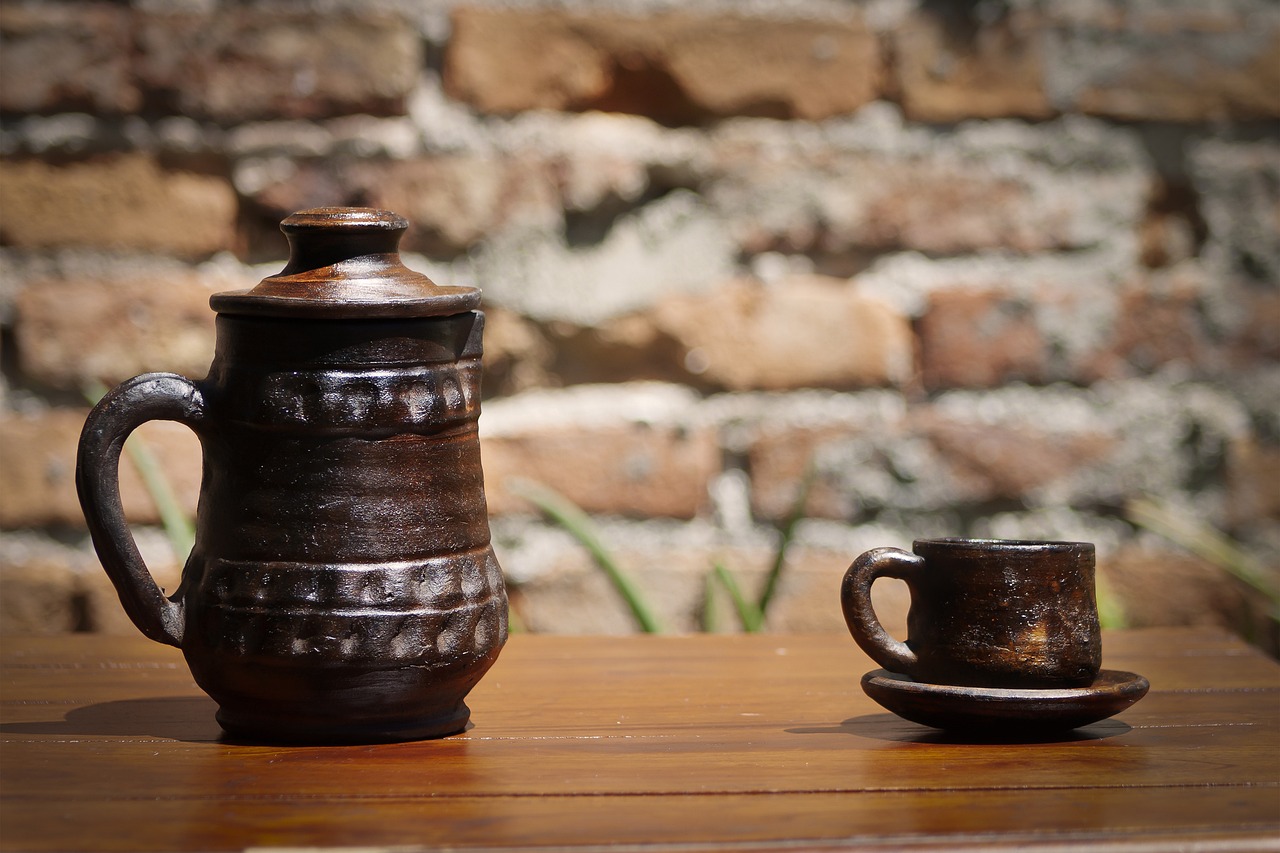
Simple Hand-Building Techniques
Hand-building is an accessible and enjoyable way for kids to dive into the world of ceramics. Unlike wheel throwing, hand-building allows children to explore their creativity without needing advanced skills or specialized equipment. This technique is all about using the hands to shape and mold clay into unique forms, making it a perfect introduction to pottery. In this section, we will cover three essential hand-building techniques: pinch pots, coil pots, and slab construction. Each of these methods offers a different approach and encourages imaginative designs, allowing kids to express their personal style.
First up, we have pinch pots. These charming little creations are made by simply pinching and pulling the clay with fingers, making them ideal for younger artists. The process is straightforward: start with a ball of clay, then press your thumb into the center to create a small indentation. Gradually pinch the walls to form a pot shape. Kids can make these pots as small or as large as they like, and the best part? They can decorate them however they wish! From vibrant colors to intricate patterns, the only limit is their imagination.
Next, we have coil pots, which are an excellent way to teach children about building and structure. To create a coil pot, kids roll out long, snake-like pieces of clay and stack them to form the walls of their pot. This technique not only enhances their fine motor skills but also encourages them to experiment with different shapes and sizes. As they build their pots, they can learn about the importance of even thickness and how to blend the coils together for a smooth finish. The unique texture of coil pots adds a delightful touch to their creations, inviting further decoration.
Lastly, let’s talk about slab construction. This method involves rolling out flat pieces of clay, or slabs, which can be cut and assembled into various shapes. Kids can create everything from boxes to tiles, allowing for a wide range of projects. The versatility of slab construction means that children can combine it with other techniques, like adding coils or pinch elements, to create mixed-media pieces. It’s a fantastic way for them to think outside the box and push their creativity to new heights.
As kids embark on their hand-building journey, it’s essential to remember a few key tips to ensure a successful experience:
- Always keep the clay damp while working to prevent it from drying out.
- Encourage children to experiment with different textures and patterns.
- Be patient and allow for mistakes; that’s part of the learning process!
In conclusion, hand-building techniques are not just about creating pottery; they are a gateway for children to explore their artistic potential. Whether they are molding pinch pots, stacking coils, or crafting slabs, each project is an opportunity for self-expression and skill development. So, gather some clay, roll up those sleeves, and let the creativity flow!
Q: What age is appropriate for kids to start hand-building with clay?
A: Generally, children as young as 4-5 years old can start with simple hand-building projects, like pinch pots. Always supervise younger kids during the process.
Q: What type of clay is best for beginners?
A: Air-dry clay is a great option for beginners, as it doesn’t require a kiln. Polymer clay is also a fun choice, especially for small projects.
Q: How can we ensure our clay projects last?
A: If using air-dry clay, make sure to follow the drying instructions carefully. For traditional clay, firing in a kiln is necessary to make the pieces durable.
Q: Can kids decorate their pottery?
A: Absolutely! Decorating is a crucial part of the pottery-making process. Kids can use paints, glazes, and even natural materials to personalize their creations.
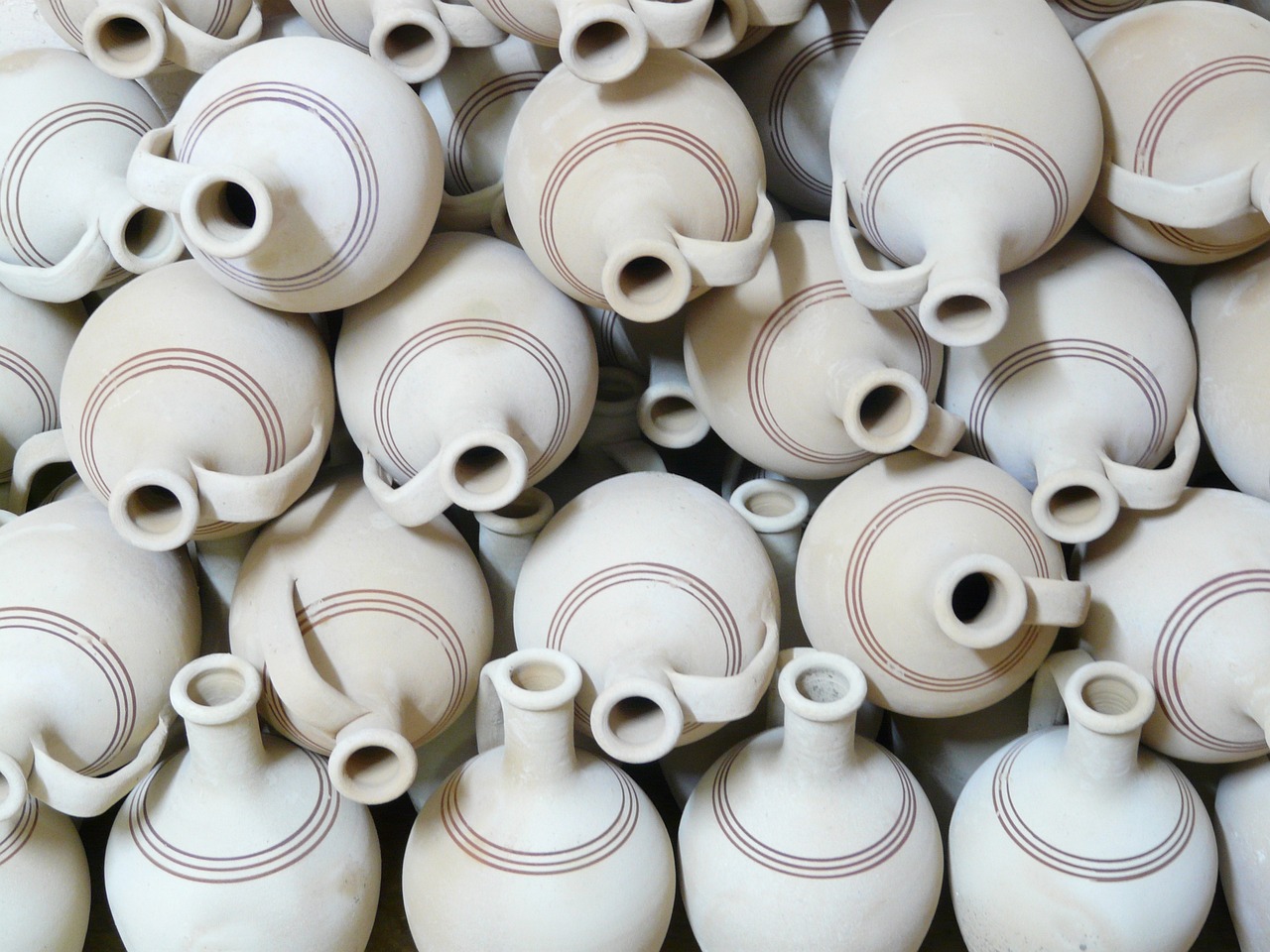
Pinch Pots
Pinch pots are a wonderfully simple and engaging ceramics project that is perfect for kids of all ages. They not only allow children to explore their creativity but also help develop their fine motor skills. The beauty of pinch pots lies in their accessibility; all it takes is a handful of clay and a little imagination! To get started, kids can follow these easy steps:
- Gather Materials: Start with some air-dry clay or traditional clay, a small bowl of water, and a clean workspace.
- Form the Base: Take a small ball of clay (about the size of a golf ball) and roll it between your palms to create a smooth sphere.
- Pinch and Shape: Press your thumb into the center of the ball, creating a small indentation. Then, using your fingers, pinch the edges of the clay to form the walls of the pot. Keep rotating the pot as you pinch to ensure even thickness.
- Refine the Shape: Once the pot is formed, smooth out any rough edges with a little water and your fingers. This step is crucial for creating a polished look.
After the basic shape is complete, the fun really begins! Kids can let their imaginations run wild by decorating their pinch pots. They can use paints, glazes, and even natural materials like leaves or flowers to create unique textures and designs. For instance, pressing a leaf into the surface of the clay before it dries can leave a beautiful imprint that adds character to the pot.
Once the pinch pots are formed, the next step is to personalize them. Here are some creative ideas to make each pot truly stand out:
- Paint: Use acrylic paints or ceramic paints to add vibrant colors. Kids can experiment with different techniques, like sponging or splattering paint for a fun effect.
- Glazes: If using kiln-fired clay, applying a glaze can give the pot a shiny finish. Encourage kids to explore various colors and layering techniques.
- Embellishments: Add beads, buttons, or even small stones to the pots for a three-dimensional effect. This not only enhances the visual appeal but also makes each piece unique.
Creating pinch pots is not just about making something pretty; it's a fantastic way for kids to express themselves and learn about the art of pottery. They can create pots for different uses, such as holding small plants, storing trinkets, or simply as decorative pieces. The possibilities are endless!
When it comes to pinch pots, the type of clay used can significantly impact the final product. Here’s a quick overview of the different clay options:
| Type of Clay | Description | Best For |
|---|---|---|
| Air-Dry Clay | Dries naturally at room temperature and does not require firing. | Beginners and quick projects. |
| Polymer Clay | A versatile clay that hardens when baked in an oven. | Detailed projects and small items. |
| Traditional Clay | Requires firing in a kiln to harden and is used for more serious pottery. | Advanced projects and functional pottery. |
By experimenting with different types of clay, kids can gain a deeper understanding of the materials they are working with and how each one affects their creations. Whether they choose air-dry, polymer, or traditional clay, the journey of making pinch pots is sure to be a rewarding experience!
Q: What age is appropriate for kids to start making pinch pots?
A: Kids as young as 4-5 years old can start making pinch pots with supervision. It's a great way for them to explore their creativity!
Q: Do I need special tools for making pinch pots?
A: No special tools are required! Just clay and your hands are enough, though some optional tools like a rolling pin or sculpting tools can help.
Q: Can pinch pots be used for food?
A: If using food-safe clay and glazes, pinch pots can be functional. However, always check the materials to ensure they are safe for food use.
Q: How long does it take for pinch pots to dry?
A: Air-dry clay usually takes 24-48 hours to dry completely, while traditional clay will need to be fired in a kiln.
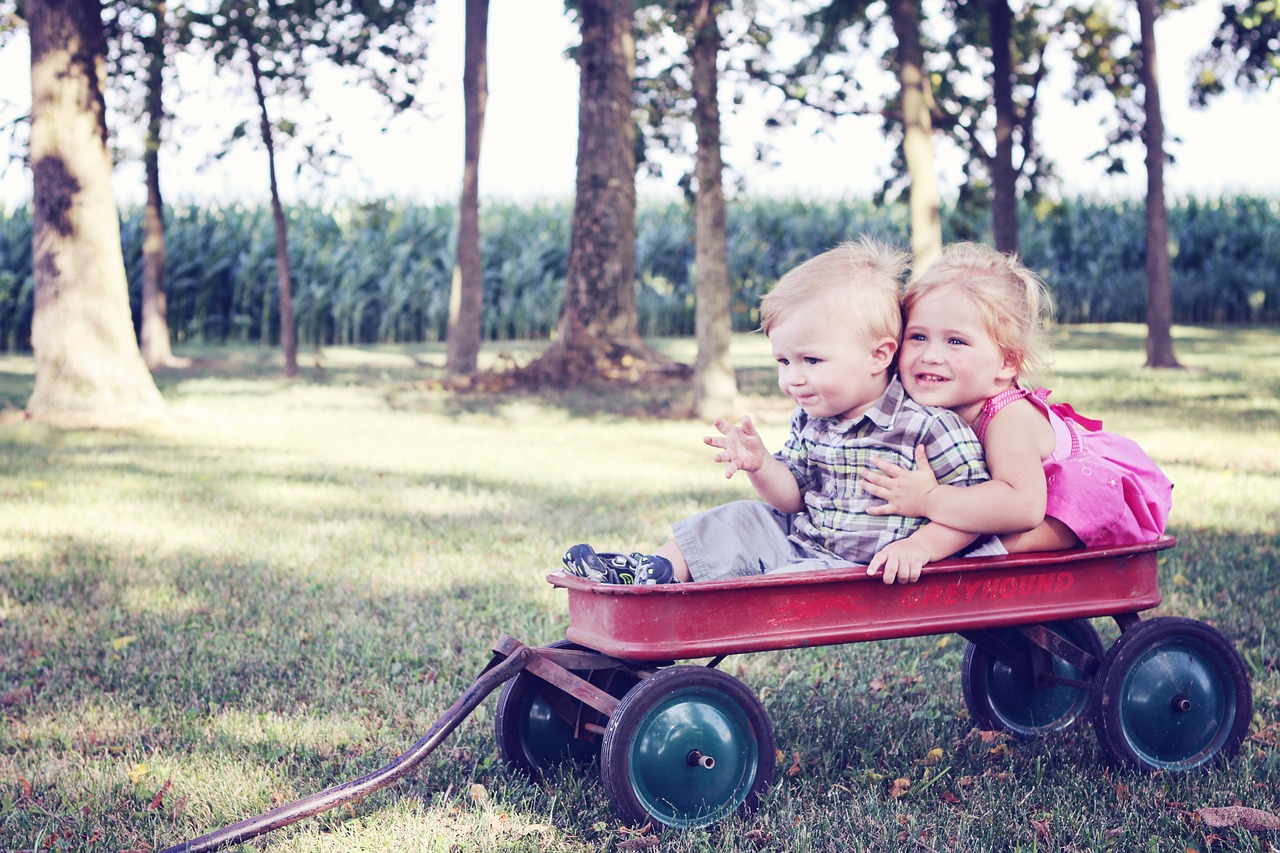
Decorating Pinch Pots
Once the pinch pots are formed, the real fun begins! Decorating these charming little creations is where kids can truly let their imaginations run wild. The beauty of pinch pots lies not only in their shape but also in how they can be personalized. There are countless ways to add flair and character to each pot, making them one-of-a-kind treasures. Let’s dive into some exciting decorating ideas!
First, kids can explore the world of colors with paints and glazes. Acrylic paints are a great option for kids, as they are easy to use and come in a wide variety of vibrant shades. A simple brush technique can transform a plain pinch pot into a colorful masterpiece. For those looking to add a shiny finish, glazes can be applied after the paint dries. Glazing adds depth and texture, making the pot visually stunning. But remember! Always follow the instructions for the glaze to ensure it’s safe and suitable for the type of clay used.
Additionally, kids can incorporate natural elements into their designs. Using items like leaves, flowers, or even small stones can create beautiful impressions on the surface of the pinch pots. This not only adds a unique touch but also connects children with nature. Imagine a pot with the delicate imprint of a fern leaf or the vibrant colors of a flower petal! This technique encourages kids to think outside the box and use their surroundings as inspiration.
Another fun idea is to use embellishments. Items such as beads, buttons, or even glitter can be glued onto the pots to give them an extra pop. Encourage kids to think about themes! For instance, a beach theme could include shells or sand, while a garden theme might utilize small flowers or green beads to mimic leaves. The possibilities are endless, and the only limit is their creativity.
For those who want to take it a step further, consider using stamps or carving tools to add patterns and textures. Kids can carve their initials, fun shapes, or even small designs directly into the clay before it dries. This not only personalizes their work but also teaches them about the different techniques involved in pottery. It’s like telling a story through art!
To wrap it up, decorating pinch pots is an excellent way for kids to express themselves while developing their artistic skills. Whether they choose to paint, use natural materials, or add embellishments, each pot becomes a reflection of their unique personality. So gather those supplies, unleash your creativity, and let the decorating begin!
- What type of paint is best for decorating pinch pots? Acrylic paint is recommended as it's easy to use and comes in many colors.
- Can I use natural materials for decoration? Absolutely! Items like leaves and flowers can create beautiful impressions on the pots.
- Is glazing necessary? While not necessary, glazing adds a lovely finish and depth to the colors.
- How can I ensure my decorations last? Make sure to follow the drying and curing instructions for both paint and glaze.
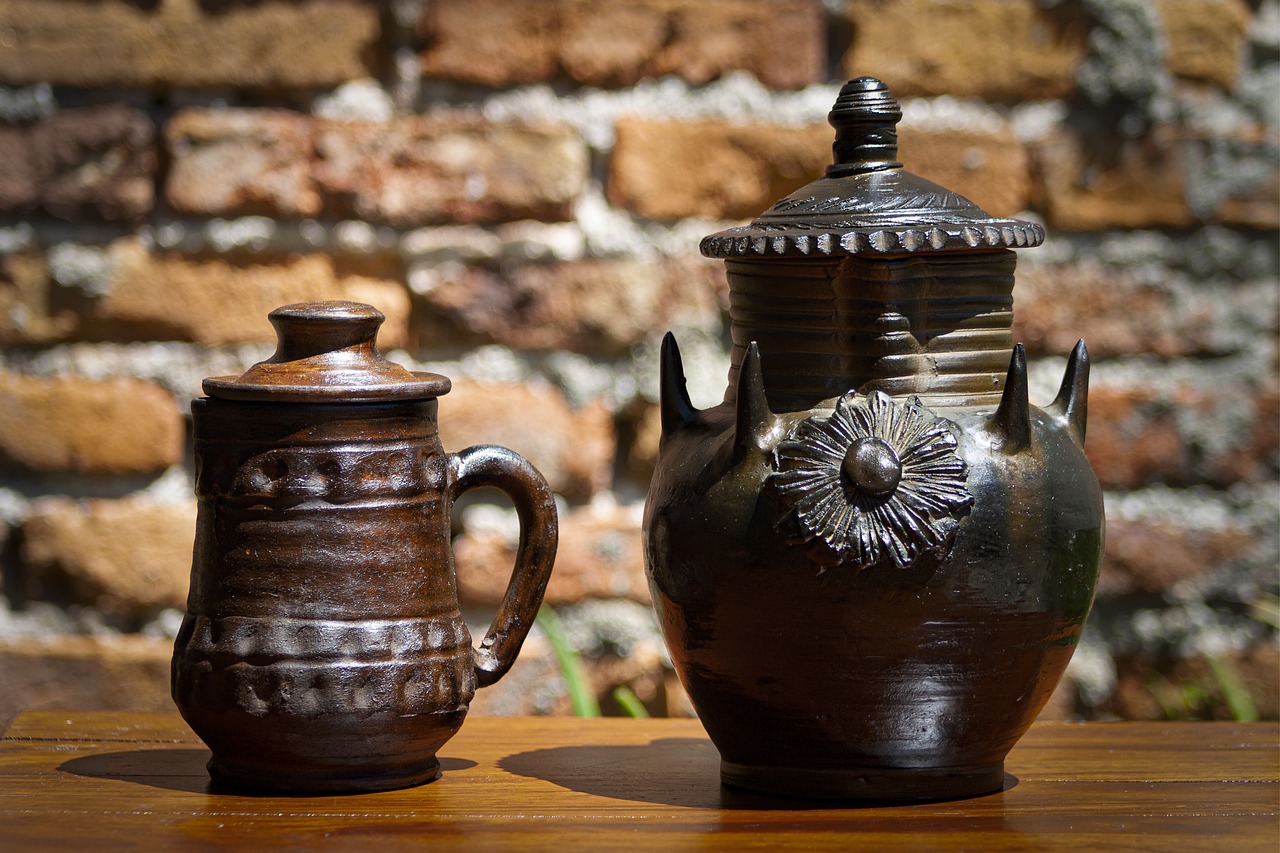
Using Different Clay Types
When embarking on a ceramics adventure, one of the most exciting aspects is choosing the right type of clay. Each type of clay has its own unique properties, and understanding these differences can greatly enhance the creative process for kids. Imagine clay as a canvas, where each type offers a different texture, feel, and potential for artistic expression. Let’s dive into the three most common types of clay that children can use: air-dry clay, polymer clay, and traditional clay.
Air-dry clay is a favorite among beginners, especially for kids. This type of clay is incredibly easy to work with and does not require any special tools or kilns to set. Once the kids finish their projects, they can simply leave them out to dry, and within a few hours, their creations are ready to be painted or decorated. This makes air-dry clay an ideal choice for young artists who are eager to see their work come to life without the wait. However, it's important to note that air-dry clay can be more fragile than other types, so gentle handling is key.
Polymer clay is another fantastic option that offers a world of possibilities. Unlike air-dry clay, polymer clay needs to be baked in an oven to harden. This type of clay is available in a wide range of colors and is known for its ability to hold fine details, making it perfect for intricate designs. Kids can create everything from tiny figurines to colorful beads. Once baked, polymer clay pieces are durable and can be used for functional items like jewelry or decorative objects. The baking process can be a fun experience, as kids get to see their creations transform before their eyes!
Lastly, we have traditional clay, which is often used in pottery studios. This type of clay requires a kiln for firing, which means it might not be the best choice for home projects unless you have access to a kiln. Traditional clay is fantastic for teaching kids about the pottery-making process, as it allows them to explore techniques like wheel throwing or sculpting. It can be a bit messy, but that’s part of the fun! Kids can create beautiful, functional pieces that can last a lifetime when properly fired and glazed.
To help you understand these different clay types better, here’s a quick comparison:
| Type of Clay | Drying Method | Durability | Best For |
|---|---|---|---|
| Air-Dry Clay | Air-drying | Fragile | Beginner projects, simple crafts |
| Polymer Clay | Baking in oven | Durable | Intricate designs, jewelry, figurines |
| Traditional Clay | Firing in a kiln | Very durable | Pottery, functional items, advanced techniques |
Choosing the right clay can significantly influence the outcome of a project, so encourage kids to experiment with different types to discover which one they enjoy the most. Each clay type offers a unique experience, making the journey of creating pottery not only educational but also incredibly fun!
Q: Can kids use air-dry clay for outdoor projects?
A: While air-dry clay can be used outdoors, it is not waterproof. It’s best to keep it indoors or use a sealant if you want to display it outside.
Q: Is polymer clay safe for children?
A: Yes, polymer clay is generally safe for children, but it should be baked by an adult to avoid any burns or accidents.
Q: How can I store leftover clay?
A: To keep clay fresh, store it in an airtight container. This will prevent it from drying out and allow kids to use it for future projects.
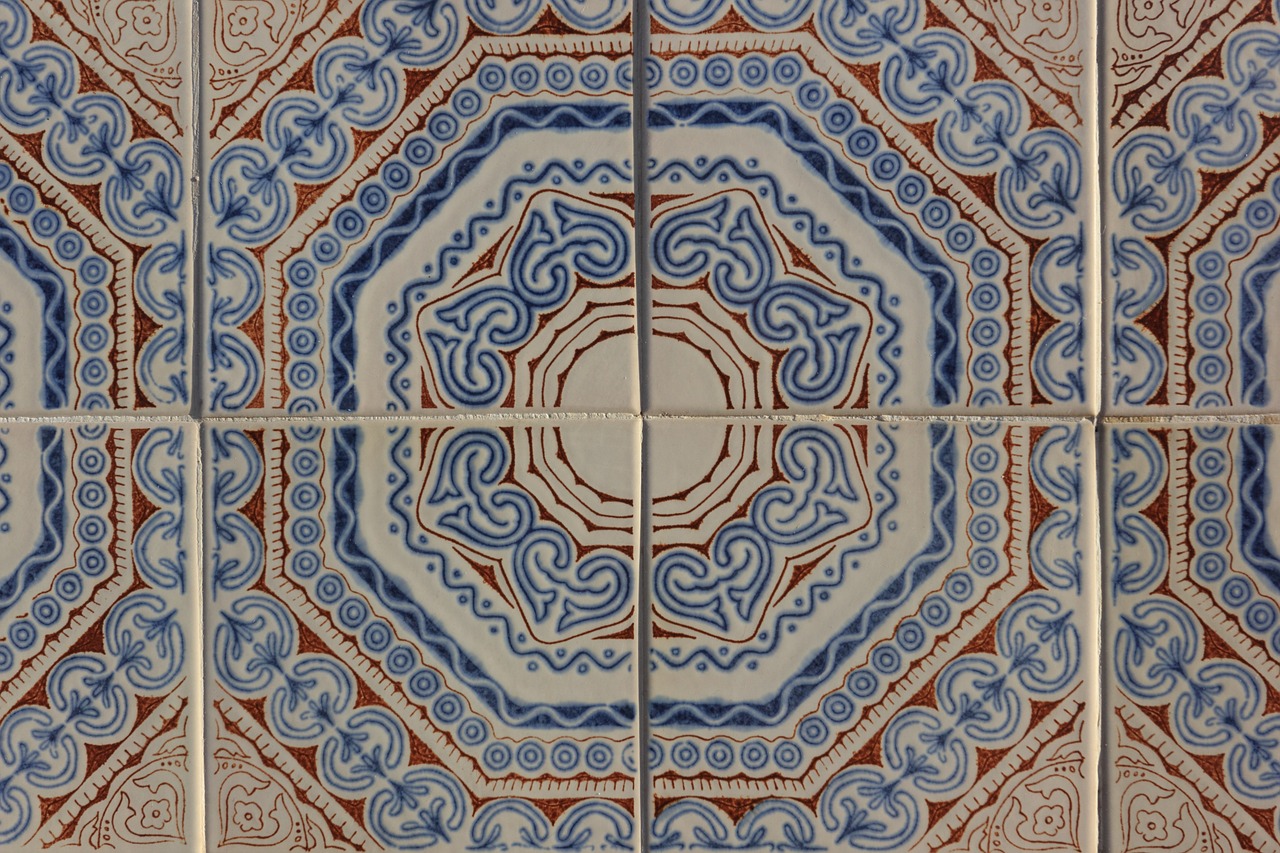
Coil Pots
Coil pots are not just a fun project; they are an incredible way for kids to learn about structure and creativity in ceramics. By rolling out long strands of clay and stacking them, children can create unique shapes that can be as simple or as intricate as their imagination allows. This hands-on activity not only boosts fine motor skills but also teaches kids about balance and design. The process is straightforward, yet the possibilities are endless, making it the perfect project for budding artists.
To get started with coil pots, gather the following materials:
- Clay (air-dry, polymer, or traditional)
- Rolling pin
- Water in a small bowl
- Clay tools (optional for detailing)
- Paints or glazes for decoration
Here’s a simple step-by-step guide to creating coil pots:
- Prepare the Clay: Start by kneading the clay to make it pliable. This step is crucial as it helps eliminate air bubbles.
- Roll the Coils: Take a piece of clay and roll it between your hands or on a flat surface to create long, snake-like coils. Aim for consistent thickness, about the width of a finger.
- Building the Base: Form a flat base by either flattening a piece of clay or creating a small dish. This will be the foundation of your coil pot.
- Add the Coils: Start placing the coils around the edge of the base, gently pressing them down to secure them. Continue stacking coils on top of each other, gradually moving inward to create the desired shape.
- Blend the Seams: Use your fingers or a clay tool to smooth out the seams between the coils, ensuring that your pot is sturdy and well-formed.
- Let it Dry: Allow the coil pot to dry completely before painting or glazing it. If using traditional clay, you may need to fire it in a kiln.
One of the most exciting aspects of making coil pots is the freedom to experiment with different shapes and sizes. Kids can create anything from small decorative bowls to large, whimsical vases. Encourage them to think outside the box—what if they made a pot shaped like a turtle or a flower? The only limit is their imagination!
Coil pots also provide an excellent opportunity for kids to learn about texture and patterns. They can use tools to imprint designs onto the surface or add embellishments like beads or shells for a personalized touch. This not only makes the pots visually interesting but also helps children understand the concept of layering in art.
In conclusion, coil pots are more than just a craft; they are a gateway for children to explore their artistic side while developing essential skills. So grab some clay and let the creativity flow—who knows what amazing creations will emerge from those little hands!
Q: What type of clay is best for coil pots?
A: Air-dry clay is a great option for beginners, but traditional clay provides a more authentic pottery experience if you have access to a kiln.
Q: How long does it take for coil pots to dry?
A: Drying time can vary depending on the type of clay used, but generally, it takes 24-48 hours for air-dry clay to harden completely.
Q: Can kids paint their coil pots?
A: Absolutely! Once the pots are dry, kids can use acrylic paints or glazes to add color and personal flair to their creations.

Creative Glazing Techniques
Glazing is where the magic truly happens in ceramics! It’s not just about adding color; it’s about transforming a simple clay piece into a stunning work of art. Kids can explore various glazing techniques that will not only enhance their creations but also teach them about color theory and texture. Imagine your pinch pots or coil pots coming to life with vibrant hues and unique finishes! There are several methods to apply glaze, and each offers a different outcome, making the process exciting and unpredictable.
One of the most popular methods is dipping. This technique involves dipping the entire piece into a bucket of glaze, which creates a smooth, even coating. It’s perfect for kids, as it’s straightforward and allows for quick application. However, it’s essential to ensure that the piece is fully dry and free of dust before dipping to avoid any imperfections. Another method is brushing, where kids can use a paintbrush to apply glaze. This technique encourages creativity, as they can experiment with patterns and designs. Plus, it gives them more control over how much glaze is applied, allowing for subtle variations in color.
For a more textured finish, kids can try sponge application. By using a sponge, they can dab glaze onto their pottery, creating a unique speckled effect. This method is not only fun but also allows for a lot of creativity, as they can mix different colors to see how they interact. Each technique has its charm, and trying them all can lead to delightful surprises!
When it comes to glazing, understanding the difference between under glazing and over glazing is crucial for achieving the desired effects. Under glazing involves applying a colored slip or glaze to the clay body before it’s fired. This method allows for detailed designs and patterns that remain vibrant after firing. It’s like painting a canvas, where the clay serves as the background. On the other hand, over glazing is applied after the initial firing, allowing for a glossy finish that enhances the colors beneath. Kids can experiment with both techniques to see how they can layer colors and create depth in their pottery.
For those looking to add an extra layer of creativity, using natural materials for glazing can be a thrilling adventure! Kids can experiment with items like fruits, vegetables, and spices to create their own unique glazes. For instance, using beet juice can create a beautiful red hue, while spinach can yield a lovely green. Not only does this technique promote sustainability, but it also encourages kids to think outside the box and explore the world around them. Imagine the excitement of creating a glaze from something as simple as a carrot or a berry! This hands-on approach not only enriches their understanding of materials but also makes the glazing process more engaging and fun.
In conclusion, the world of glazing offers endless possibilities for kids to express their creativity. Whether they choose to dip, brush, or sponge their way to a masterpiece, each technique provides a unique opportunity to learn and explore. The thrill of seeing their creations come to life with color and texture is an experience that will surely inspire them to keep creating. So grab some glaze and let the artistic journey begin!
Q1: What type of clay is best for kids to use in ceramics projects?
A1: Air-dry clay is often recommended for kids as it’s easy to work with and doesn’t require a kiln. Polymer clay is also a great option, as it can be baked in a regular oven.
Q2: How can I ensure the glaze adheres properly to the pottery?
A2: Make sure the pottery is clean and dry before applying glaze. It’s also essential to follow the instructions on the glaze packaging for the best results.
Q3: Can kids use natural materials for glazing?
A3: Absolutely! Kids can experiment with fruits, vegetables, and spices to create unique glazes, making the process both fun and educational.
Q4: What safety precautions should be taken when working with ceramics?
A4: Always supervise children when using tools, and ensure they wear appropriate safety gear, such as gloves and aprons, especially when handling glazes.

Under Glazing vs. Over Glazing
When it comes to ceramics, understanding the difference between under glazing and over glazing can significantly impact the final look of your creations. Both techniques offer unique ways to add color and texture to your pottery, but they do so in distinct manners. Under glazing involves applying color to the clay body before the final glaze is added, allowing for a more subtle, integrated look. This technique is fantastic for achieving intricate designs and detailed patterns, as the color is absorbed into the clay, creating a more muted effect that can be quite beautiful.
On the other hand, over glazing is the process of applying a colored glaze on top of an already glazed surface. This method can produce vibrant, glossy finishes that stand out and can be quite striking. Over glazing is often used for decorative pieces where bold colors and shiny surfaces are desired. The choice between these two techniques often depends on the desired outcome and the type of project being undertaken.
Here’s a quick comparison to help you understand the differences:
| Feature | Under Glazing | Over Glazing |
|---|---|---|
| Application | Applied before the final glaze | Applied on top of the final glaze |
| Color Intensity | Subtle and integrated | Vibrant and glossy |
| Design Detail | Great for detailed designs | Best for bold, surface designs |
| Best For | Functional pottery with artistic flair | Decorative pieces and statement items |
Choosing between under glazing and over glazing can depend on the specific project and the desired aesthetic. For instance, if you want to create a piece that tells a story through intricate patterns, under glazing might be your best bet. However, if you're looking to create a show-stopping piece with bright colors that catch the eye, over glazing would be the way to go. Experimenting with both techniques can lead to exciting discoveries, so don’t hesitate to try them out!
In the world of ceramics, the possibilities are endless, and understanding these glazing techniques can empower young artists to express themselves in new and exciting ways. So grab some clay, get your brushes ready, and let your imagination run wild!
- What is the main difference between under glazing and over glazing?
Under glazing is applied to the clay body before the final glaze, resulting in a more muted effect, while over glazing is applied on top of the glaze for a vibrant finish. - Can you use both techniques on the same piece?
Absolutely! Many artists combine both methods to achieve unique looks and textures. - Which technique is better for beginners?
Under glazing might be easier for beginners as it allows for more control over the design before the final glaze is applied.
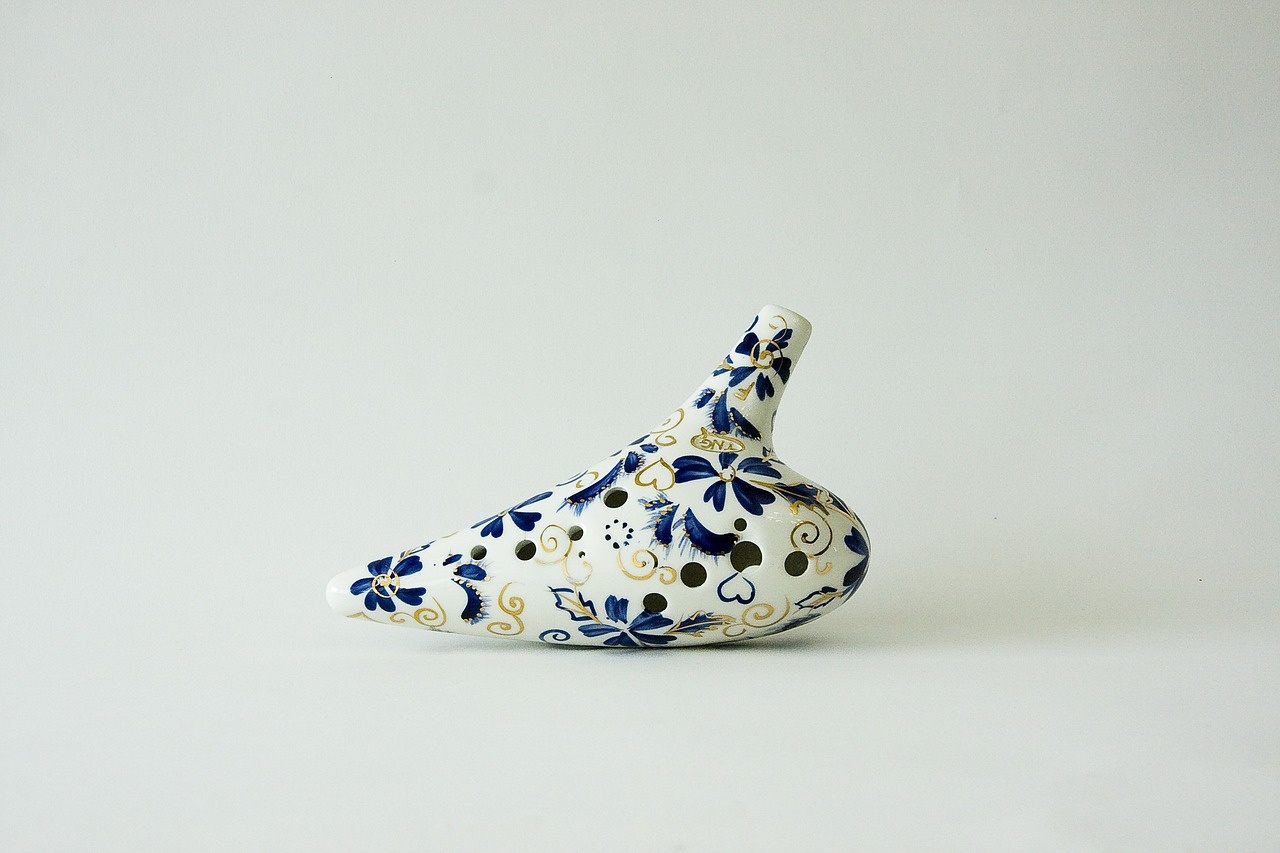
Using Natural Materials for Glazing
When it comes to glazing ceramics, kids can have a blast experimenting with natural materials that not only add color but also ignite their creativity. Imagine the thrill of transforming everyday fruits, vegetables, and spices into stunning glazes! This method not only makes the pottery visually appealing but also connects children to the world around them, teaching them about natural resources and sustainability.
To get started, gather some common kitchen items that can be used for glazing. Here are a few ideas:
- Fruits: Berries, apples, and avocados can be mashed to create vibrant colors.
- Vegetables: Spinach and beets are excellent for green and red hues, respectively.
- Spices: Turmeric and paprika can add warm yellow and red tones.
Once you have your materials, the process is simple. Begin by preparing the natural ingredients. For instance, you can blend berries with a bit of water to achieve a paint-like consistency. The key is to strain the mixture to remove any solid bits, ensuring a smooth application. This step is crucial because it prevents the glaze from becoming lumpy on the pottery surface.
After preparing your natural glazes, children can paint them onto their ceramic pieces using brushes or sponges. This hands-on approach not only enhances their fine motor skills but also allows them to explore different techniques, such as layering colors for a more complex effect. Encourage kids to experiment with different combinations and applications to see how the colors interact with each other.
One of the most exciting aspects of using natural materials is the element of surprise. Once the pottery is fired, the colors can change, sometimes dramatically. For example, a bright blueberry glaze might turn into a soft lavender hue, while a spinach glaze could deepen into a rich green. This unpredictability adds an element of discovery to the ceramics process, teaching kids that art can be both structured and spontaneous.
Not only do natural glazes provide a unique aesthetic, but they also promote a conversation about the environment and the importance of using sustainable materials. By incorporating these natural elements into their projects, children learn to appreciate the beauty of nature and the resources it provides. So, the next time your kids are working on a ceramics project, encourage them to look beyond traditional glazes and explore the vibrant world of natural materials!
Q: Can all natural materials be used for glazing?
A: Not all natural materials are suitable for glazing. It's best to stick to fruits, vegetables, and spices that can create a liquid form without lumps.
Q: How do the colors change after firing?
A: The firing process can alter the colors of natural glazes, sometimes intensifying them or changing them entirely. This is part of the fun and surprise!
Q: Are natural glazes safe for food items?
A: If you're creating functional pottery, make sure to use non-toxic natural materials and seal the pottery properly. Always check for food safety standards.

Fun Themed Projects
When it comes to ceramics, the sky's the limit, especially for kids bursting with creativity! can ignite their imagination and transform simple clay into extraordinary works of art. Imagine your child molding a cute animal figurine or crafting a vibrant holiday decoration that brightens up a room. Themed projects not only provide a focus but also encourage kids to explore their artistic abilities in a playful way.
One delightful idea is to create animal figurines. Kids can choose their favorite animals and sculpt them using hand-building techniques. Whether it's a cuddly bear or a slithery snake, the joy of bringing their favorite creatures to life can be incredibly rewarding. To make it even more exciting, they can paint their creations in bright colors, adding personality and flair. Just picture a jungle filled with colorful clay animals, each one telling a unique story!
Another engaging theme is holiday decorations. Kids can make ornaments for Christmas, spooky decorations for Halloween, or even festive items for Thanksgiving. This not only allows them to express their creativity but also gives them a sense of pride as they decorate their home with their handcrafted pieces. For instance, creating a series of pumpkins for Halloween can lead to a fun family tradition where each year, new designs are added to the collection.
Functional pottery is also a fantastic avenue for themed projects. Children can create practical items like bowls, mugs, or planters that they can use in their everyday lives. Imagine the satisfaction of sipping hot chocolate from a mug they designed themselves or using a hand-painted bowl to serve snacks during a family movie night. It's a perfect blend of creativity and utility, allowing kids to see the tangible results of their hard work.
To make it even easier, here’s a quick table summarizing some fun themed project ideas:
| Theme | Project Ideas |
|---|---|
| Animal Figurines | Dogs, Cats, Dinosaurs, Sea Creatures |
| Holiday Decorations | Christmas Ornaments, Halloween Pumpkins, Easter Eggs |
| Functional Pottery | Bowls, Mugs, Planters, Vases |
Incorporating themes into ceramics projects not only enhances the creative experience but also allows kids to engage with their interests and passions. Whether they are inspired by nature, holidays, or their favorite hobbies, themed projects provide a platform for self-expression. So, roll up those sleeves, grab some clay, and let the fun begin! Who knows what masterpieces await?
Q: What age is appropriate for kids to start ceramics projects?
A: Kids as young as 4 or 5 can start with simple projects like pinch pots, while older children can explore more complex techniques.
Q: Do I need special tools for ceramics projects?
A: While basic tools can enhance the experience, many projects can be done with just hands and simple household items.
Q: How can I ensure my child's safety while working with clay?
A: Always supervise children during ceramics projects, especially when using tools or glazes, and ensure they wash their hands after handling materials.
Q: Can I use regular paint on ceramics?
A: It's best to use paints specifically designed for ceramics to ensure durability and safety, especially if the items will be used for food or drink.

Seasonal Ceramics
Creating seasonal ceramics is not just a fun activity; it’s a wonderful way for kids to celebrate the changing times of the year through art. Imagine crafting a vibrant pumpkin pot for Halloween or a delicate snowflake dish for winter festivities. Each season brings its own unique colors, shapes, and themes, allowing children to express their creativity while learning about the world around them.
To get started, consider the following seasonal ideas that can inspire your little artists:
- Spring: Kids can create flower pots adorned with hand-painted blooms or whimsical animal figurines that represent the rejuvenation of nature. Using pastel colors can enhance the cheerful vibe of spring.
- Summer: How about making beach-themed ceramics? Children can craft seashell-shaped bowls or sun-themed tiles that reflect the warmth and fun of summer days spent by the sea.
- Autumn: Fall is perfect for making leaf-shaped dishes or pumpkin mugs. Kids can learn about the changing colors of leaves and incorporate those hues into their projects.
- Winter: Winter-themed ceramics can include snowman figurines or festive ornaments. Encourage kids to use metallic glazes to give their creations a frosty, shimmering effect.
These projects not only encourage creativity but also help children develop important skills such as hand-eye coordination and fine motor skills. Moreover, seasonal ceramics can be a fantastic way to engage children in discussions about holidays, traditions, and the environment.
In addition to these ideas, you can incorporate storytelling into the ceramics process. For example, while crafting a holiday ornament, share the story behind the holiday and how different cultures celebrate it. This not only enriches the crafting experience but also fosters a sense of connection and understanding among children.
Finally, don't forget to display the finished pieces! Whether it’s hanging ornaments on a tree or showcasing seasonal pots on a windowsill, seeing their creations on display will boost kids' confidence and encourage them to explore more in the world of ceramics.
Q: What materials do I need for seasonal ceramics projects?
A: Basic materials include clay (air-dry, polymer, or traditional), sculpting tools, paint, and glazes. You may also want brushes and sponges for glazing techniques.
Q: Can I use natural materials for glazing?
A: Absolutely! Kids can experiment with natural items like fruits and spices to create unique colors and textures in their ceramics.
Q: How can I encourage my child to be more creative with their ceramics?
A: Encourage them to think outside the box! Suggest they mix colors, try different shapes, or incorporate themes from their favorite stories or movies into their designs.

Functional Pottery Ideas
Creating functional pottery is not just about making beautiful pieces; it's about blending art with utility. Kids can have a blast crafting items that serve a purpose in their everyday lives. Imagine the joy of sipping from a mug they've made themselves or displaying a plant in a pot that they sculpted with their own hands! Engaging in these projects not only fosters creativity but also instills a sense of accomplishment and pride in their work.
One of the most exciting aspects of functional pottery is the variety of items children can create. Here are some ideas to inspire their projects:
- Bowls: Kids can start with simple bowl shapes and gradually experiment with different sizes and depths. A bowl can be used for snacks, trinkets, or even as a decorative piece on a shelf.
- Mugs: Making a mug can be a fun challenge. Kids can personalize their mugs with their names or favorite designs, making each one unique. Plus, they’ll love using their own creations for hot chocolate or juice!
- Planters: Encourage children to create small pots for plants. This project not only allows them to practice their pottery skills but also teaches them about caring for plants. They can paint or glaze their planters to match their room decor.
When crafting these functional pieces, children can explore various techniques. For instance, they might want to try out different glazing methods to add color and texture to their creations. A simple dipping technique can create a beautiful finish, while sponge application can add interesting patterns. The possibilities are endless!
It's also essential to consider the durability of the pottery. Teaching kids about the firing process and how it strengthens their creations can be an exciting part of the learning experience. Discussing the differences between air-dry clay and oven-bake clay can help them understand which materials are best suited for their functional projects.
Incorporating these functional pottery ideas into their creative repertoire not only enhances their artistic skills but also allows them to make items that they can cherish and use in their daily lives. Who wouldn’t want to show off a beautifully crafted mug or a vibrant planter made by their own hands? These projects can become treasured keepsakes that remind them of their creative journey.
Q: What type of clay is best for kids to use for functional pottery?
A: Air-dry clay is a great option for beginners as it doesn't require a kiln. However, oven-bake clay can also be used for more durable items. It's important to supervise kids during the baking process.
Q: How can kids personalize their pottery?
A: Kids can personalize their pottery by adding their names, favorite colors, or unique designs. Using stamps, stencils, or even natural materials can create interesting textures and patterns.
Q: What are some safety tips for kids working with pottery?
A: Always supervise children while they work with sharp tools or hot materials. Make sure they wear appropriate clothing and use a clean workspace to avoid accidents.
Frequently Asked Questions
- What age is appropriate for kids to start working with ceramics?
Kids can start working with ceramics as young as 4 or 5 years old. At this age, they can enjoy simple hand-building techniques like pinch pots. As they grow older, they can tackle more complex projects, such as coil pots and glazing techniques, allowing their creativity to flourish!
- What materials do I need to get started with ceramics?
To kick off your ceramics journey, you’ll need some basic supplies. Here’s a quick list:
- Clay (air-dry, polymer, or traditional)
- Tools (rolling pin, sculpting tools, etc.)
- Paints and glazes for decoration
- A workspace that’s easy to clean
Having these materials will set a solid foundation for your creative projects!
- Can kids use air-dry clay for their projects?
Absolutely! Air-dry clay is a fantastic option for kids because it doesn’t require a kiln to harden. Just shape, let it dry, and paint it! It’s perfect for beginners and allows for immediate results without the need for firing.
- What are some fun ways to decorate ceramics?
Decorating ceramics is where the magic happens! Kids can use:
- Paints and brushes for colorful designs
- Natural materials like fruits and vegetables for unique textures
- Stickers and stamps for added flair
The possibilities are endless, so let their imaginations run wild!
- How can I ensure my child’s safety while working with ceramics?
Safety first! Here are some tips to keep in mind:
- Supervise young children closely to prevent choking hazards with small items.
- Use non-toxic materials and glazes.
- Ensure the workspace is well-ventilated, especially when using paints or glazes.
With these precautions, kids can enjoy their creative time safely!
- What are some themed ceramics projects I can do with my kids?
Themed projects can be a blast! Consider these ideas:
- Animal figurines for a fun zoo collection
- Holiday decorations for festive cheer
- Functional pottery, like bowls and mugs, for practical use
These projects not only inspire creativity but also make great gifts!



















